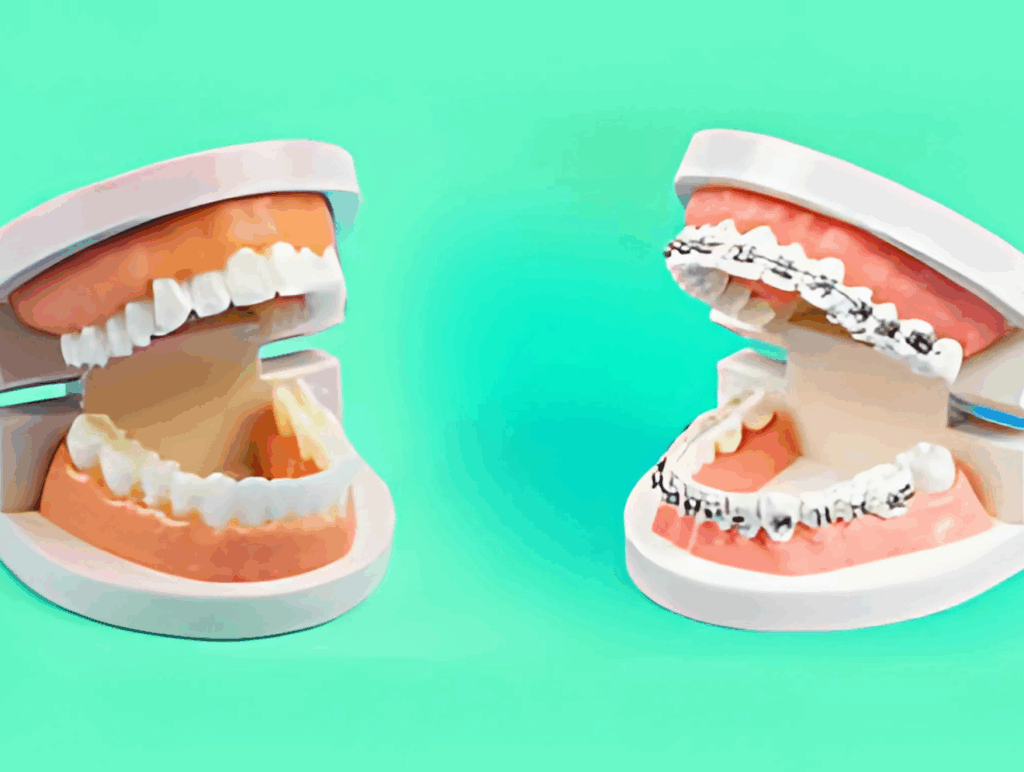
- +91-9211267759
- Wed - Mon : 10:00 am to 8:00 pm
- Tuesday Closed
Clear Aligners or Metal Braces? Here's How to Choose

Clear Aligners or Metal Braces?
Orthodontic treatment isn’t just for teenagers anymore. Many adults are now considering straightening their teeth, whether they never had braces growing up or their teeth have shifted over time. Improving your smile can boost confidence and enhance oral health, and thanks to modern orthodontics, there are now more treatment options than ever. Among the most popular choices are traditional metal braces and clear aligners. Both are effective at realigning teeth, but the best choice for you depends on your lifestyle, budget, and the complexity of your dental needs.
Understanding Metal Braces
Metal braces are the most well-known form of orthodontic treatment. They involve the use of metal brackets bonded to each tooth, connected by wires and small rubber bands. These wires are periodically adjusted by an orthodontist to apply continuous, gentle pressure, gradually moving the teeth into their correct positions. Braces are made from durable stainless steel and can handle significant alignment issues, including overcrowding, large gaps, or severe bite problems. Their proven track record makes them a go-to choice for many orthodontic patients.
How Clear Aligners Work
Clear aligners, on the other hand, are a more discreet option. These are transparent, plastic trays custom-designed to fit over your teeth. Like braces, they work by applying gentle pressure to shift your teeth into alignment. However, aligners are removable, allowing you to take them out while eating, brushing, or attending special occasions. Patients typically receive a series of trays, each slightly adjusted, to wear over time. Each set is worn for about one to two weeks before moving on to the next, continuing until the teeth reach their final positions.
Everyday Advantages of Clear Aligners
One of the most appealing benefits of clear aligners is their low visibility. Because they’re transparent, they’re almost invisible in daily life, which makes them especially popular among adults. They’re also more comfortable since they lack the metal brackets and wires that can irritate the inside of your mouth. Another big plus is convenience—aligners can be removed during meals and for cleaning, making oral hygiene simpler and more thorough. Unlike braces, there’s no risk of food getting stuck or brackets breaking off while eating something crunchy or sticky.
Getting Started with Treatment
Your first step toward straighter teeth is a visit to your orthodontist. They’ll examine your mouth, take X-rays, photographs, and impressions of your teeth to develop a treatment plan. If you choose braces, you’ll need to visit the clinic regularly, usually every four to six weeks, to have the wires adjusted. Treatment with braces typically lasts between one to three years, depending on your individual needs. For aligners, the orthodontist will provide you with several sets at once and give instructions on how long to wear each. While aligners generally require fewer office visits, patients still need periodic check-ins to ensure everything is progressing correctly.
Choosing What Works Best
The best treatment depends on your specific dental condition. Metal braces are especially effective for correcting severe alignment problems and complex bite issues. Because they are fixed in place, there’s no risk of losing them, which makes them a good option for younger patients or those who might forget to wear aligners consistently. Braces are usually more affordable, and depending on your insurance, they might be partially or fully covered.
When Clear Aligners Are the Better Option
Clear aligners are ideal for patients with mild to moderate alignment problems who value comfort and aesthetics. They may cost slightly more than traditional braces and may not be covered under all insurance plans, but they offer more flexibility. Aligners also require self-discipline—patients need to wear them for 22 hours a day to see results. Skipping wear time can delay progress and extend treatment duration. For patients who are committed and responsible, aligners can be a convenient, subtle way to achieve a straighter smile.
Treatment Duration and Cost Considerations
Treatment times can vary for both options. Braces usually take longer, with an average duration of 18 to 36 months. Aligners may work faster for minor issues, with treatment typically lasting 6 to 18 months. The cost of treatment depends on several factors, including the length of treatment, the type of appliance used, and your location. Aligners tend to be slightly more expensive than braces, but prices can vary widely depending on the provider. It’s best to consult your orthodontist and check your insurance policy to understand your financial options.
Making the Right Decision
Ultimately, the choice between metal braces and clear aligners comes down to your personal preferences and the complexity of your dental alignment. While braces might be more effective for severe issues and offer a lower up-front cost, aligners provide the flexibility and appearance many adults prefer. With proper care and guidance from your orthodontist, both options are capable of producing a healthy, beautiful smile.


Categories
Recent Posts




Book an appointment
+91 92112 67759
